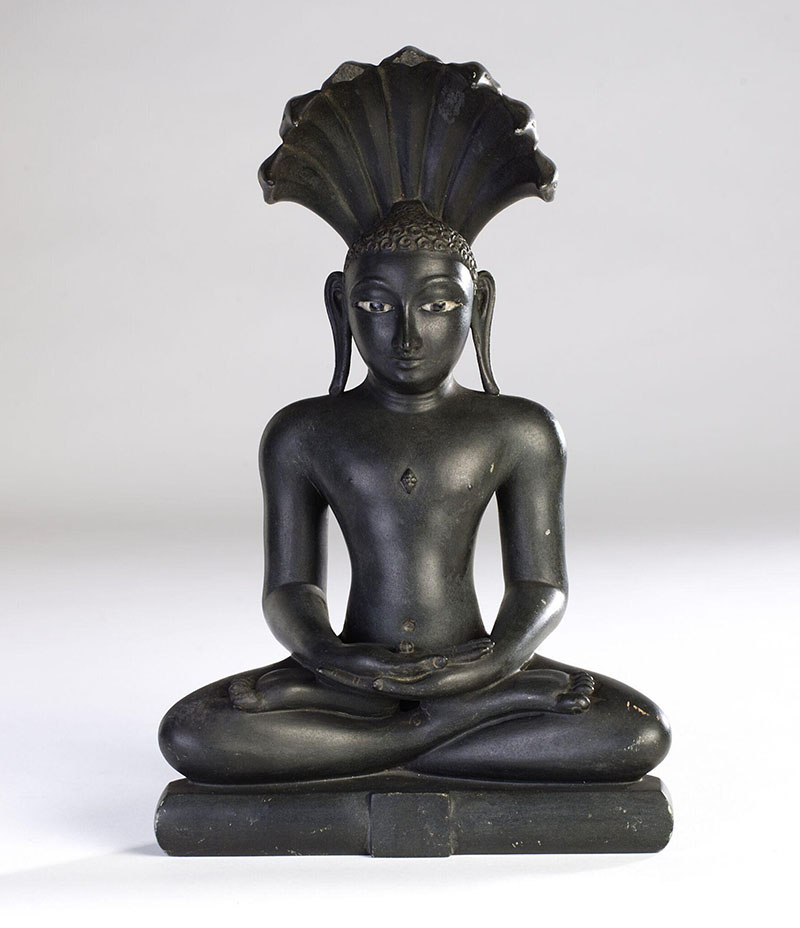Mask of Vaikuntha Vishnu, late 5th century. Learn more about 5th century masks
Designed by 

Parshvanatha (b. c. 872 BCE; d. c. 772 BCE) was the twenty-third Tirthankara (propagator of dharma) of Jainism. He is recognised as the earliest historical figure who is a Tirthankara and was the only one conferred with the title of Kalikalkalpataru (kalpavriksha or sacred tree in the kal yuga or modern era). Born in present-day Varanasi, Uttar Pradesh, he is considered a key figure in the revival and propagation of Jainism. He attained moksha (spiritual liberation) on Mount Sammeda, in present-day Madhuban, Jharkhand. Parshvanatha is typically depicted in the seated lotus or kayotsarga position, with a multi-headed serpent hood. He is also identified by a snake emblem stamped beneath his legs and identified by the colour green. In his depictions, he is accompanied by Dharnendra and Padmavati, the snake god and goddess. Some significant depictions of the Tirthankara can be seen in the Parshavnatha temple in Khajuraho, Madhya Pradesh, and the Dilwara Temples in Mount Abu, Rajasthan.